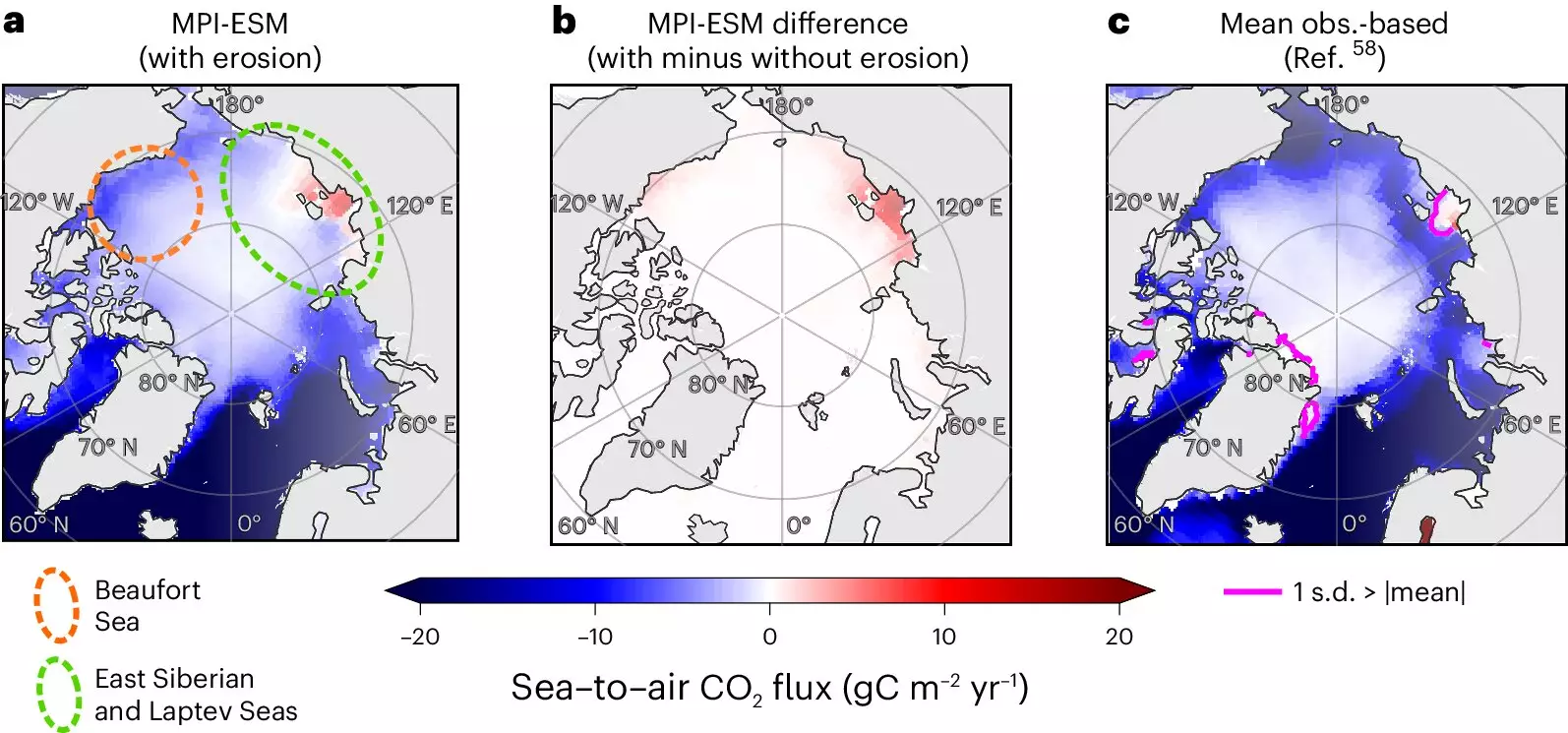As climate change progresses at an alarming pace, the Arctic Ocean finds itself in a precarious position, one that is becoming increasingly detrimental not only to the region itself but also to the global climate system. A recent study published in *Nature Climate Change* highlights the significant decline in the Arctic Ocean’s ability to function as a carbon sink, primarily due to the dual issues of melting permafrost and intensified coastal erosion. This breakthrough research models the intricate relationship between these factors and the potential release of carbon dioxide (CO2) into the atmosphere, projecting a scenario where by 2100, the Arctic’s contribution to atmospheric carbon could mirror the emissions from nearly 10% of all cars in Europe as of 2021. Such findings warrant a deeper examination of the implications for both the planet and the delicate ecosystems that inhabit this region.
Permafrost, the permanently frozen layer of the ground that historically has sequestered immense quantities of carbon, remains a focal point of concern among climatologists. It is estimated that approximately 1,500 gigatons of carbon reside within permafrost, significantly overshadowing the amount present in the Earth’s atmosphere. However, as global temperatures rise, thawing permafrost becomes increasingly common, facilitating the release of this stored carbon back into the atmosphere. The melting permafrost creates a feedback loop: as it releases CO2 and methane—another potent greenhouse gas—it further exacerbates climate change, which in turn leads to more thawing. The study’s modeling indicated that erosion along the Arctic coast is not a mere statistical anomaly but a consequence of a rapidly changing climate, with projections suggesting that coastal permafrost erosion could double or even triple by the end of this century.
The rapid erosion of coastal permafrost is a direct result of rising sea levels, increased storm activity, and the duration of thawing periods during the summer months. David Nielsen, the lead author of the research, stated that the absence of frozen soil further exposes coastlines to destructive waves and storm surges, resulting in the mobilization of organic matter into the ocean. This erosion not only diminishes the Arctic Ocean’s capacity to absorb CO2 but also threatens the ecosystems and communities that rely on a stable marine environment. Areas like Drew Point in Alaska and the Mackenzie River Delta are experiencing acute impacts, with adverse effects not just on the oceanic ecosystem, but also on local communities facing displacement due to erosion, loss of housing, and the destruction of cultural heritage sites.
The research raises critical questions about how these changes will alter the climate system. Erosion of coastal permafrost could lead to an annual increase in atmospheric CO2 ranging from 1.1 million to 2.2 million tons for every additional degree of global warming. This creates an alarming feedback loop: climate change triggers permafrost thaw, which in turn releases more greenhouse gases, enhancing the effects of climate change. Such dynamics create a scenario fraught with uncertainty, wherein even slight increases in global temperatures could have disproportionate and cascading effects on our planet’s climate systems.
While the data presented in the study serves as a warning, it also underscores the pressing need for broader and enhanced research efforts. Hidden within the intricate data and findings is the overarching message: urgent action must be taken to reduce reliance on fossil fuels, thereby curtailing the anthropogenic emissions that precipitate climate change. Although the contribution of coastal permafrost erosion to global greenhouse gas emissions is relatively small—making up a mere 0.1% of total human emissions—its ramifications are significant enough to alter the trajectory of climate change significantly.
The urgency of the situation surrounding the Arctic Ocean’s diminishing capacity as a carbon sink cannot be overstated. As climate change accelerates, the need to understand these complex interactions becomes paramount. Every fraction of carbon that is managed could lessen the weight of climate instability that future generations may bear. Therefore, enhancing our understanding of permafrost dynamics, its interactions with climate variables, and the socio-economic impacts of coastal erosion is crucial for informing actionable solutions moving forward. As nature continues to evolve under the pressures of a changing climate, the scientific community must stay vigilant in their efforts to monitor, analyze, and combat these critical changes.


Leave a Reply